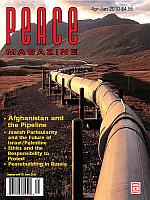
Peace Magazine Apr-Jun 2010, page 28. Some rights reserved.
Search for other articles by John Bacher here
Lawrence S. Wittner, Confronting the Bomb: A Short History of the World Nuclear Disarmanent Movement (Stanford University Press, 2009).
Lawrence S. Wittner’s Confronting the Bomb is a magnificent and engaging history of one of the most important movements in the past eighty years — the movement for the abolition of nuclear weapons. He writes well in describing both the heroic accomplishments and the great remaining challenges of the nuclear weapons abolition movement. Its ebbs and flows, victories and defeats, strengths and shortcomings, are all described with skill and passion.
One of the most shocking and revealing discoveries I found in Confronting the Bomb was that, originally, the majority of the scientists who later became involved in the bomb’s creation during the struggles against Nazism in World War II, had attempted to prevent its creation. In this regard, and throughout the book, a towering giant emerges: Leo Szilard.
Having a doctorate in physics and growing up in Berlin, Szilard was appalled by the rise of Nazism in Germany. This motivated him to create “a small group of wise, unselfish men and women to preserve civilization from the disaster that loomed.” When in 1933 he conceived of the process that “could create a nuclear chain reaction and, thus lead to the creation of atomic bombs,” he recognized the serious threat to humanity this discovery posed. He sought to patent the process and pull prominent “physicists into a conspiracy of silence on the subject.”
For a time Szilard had success in drawing senior scientists into his conspiracy of goodness. Tragically however, his plans came apart when, as Wittner details, “a leading French research team balked. Like many scientists, members of the French team considered it unlikely that an atomic bomb would be built for many years. Furthermore, they detested secrecy in science. As a result, they published their findings in April 1939, thereby precipitating small-scale atomic bomb programs in Germany, Britain, and the Soviet Union.”
Wittner’s compelling narrative makes clear the important role that scientists, peace activists, and religious groups such as the World Council of Churches, Indian Gandhians, and the Buddhist Soka Gakkai have played in the nuclear weapons abolitionist movement. He contrasts this “non-aligned” peace movement with the World Peace Council (WPC).
Gorbachev understood how much the leaders of the World Peace Council opposed his peace initiatives. Wittner notes that, “On a variety of occasions, he spoke directly with other leading antinuclear campaigners, corresponded with them, and encouraged their visits to the Soviet Union. Pushing a proposal through the Politburo to free Sakharov from house arrest, Gorbachev personally phoned the dissident physicist and invited him to Moscow. When conservatives on the Central Committee ob- jected, Gorbachev retorted in irritation.“The public should participate in the struggle for peace.” This courtship of activists, however, did not extend to the WPC and its affiliates. As the leaders of these groups were usually party conservatives, rather than proponents of the “new thinking,” Gorbachev marginalized them, leaving them out of his conferences, his speeches, and his considerations.
The facts, although not the specific analysis of Confronting the Bomb, show the connections between democracy and peace. Some of the worst persecution of peace activists, including executions and long imprisonments, took place in Turkey and Greece when these countries were military dictatorships. Wittner reveals how military coups in both these countries were promoted by those countries’ generals, to crush their domestic peace movements. This was also a motivation of the failed military coup against Gorbachev, which had the tragic consequence of breaking up the Soviet Union.
Wittner is short on details on how peace activists can elect politicians who will champion the cause of nuclear abolition. He does, however, provide one exciting example of how this can be done well, drawn from the example of one of his noble heroes, Szilard. Faced with the power of militaristic Republicans in the US Senate, he “became determined to fund the races of peace candidates.” To do this, Szilard established the Council for a Livable World and made substantial financial donations to the campaigns of George McGovern and several other anti-war candidates who were all elected.
Reviewed by John Bacher, a historian and activist in St. Catharines.

Peace Magazine Apr-Jun 2010, page 28. Some rights reserved.
Search for other articles by John Bacher here